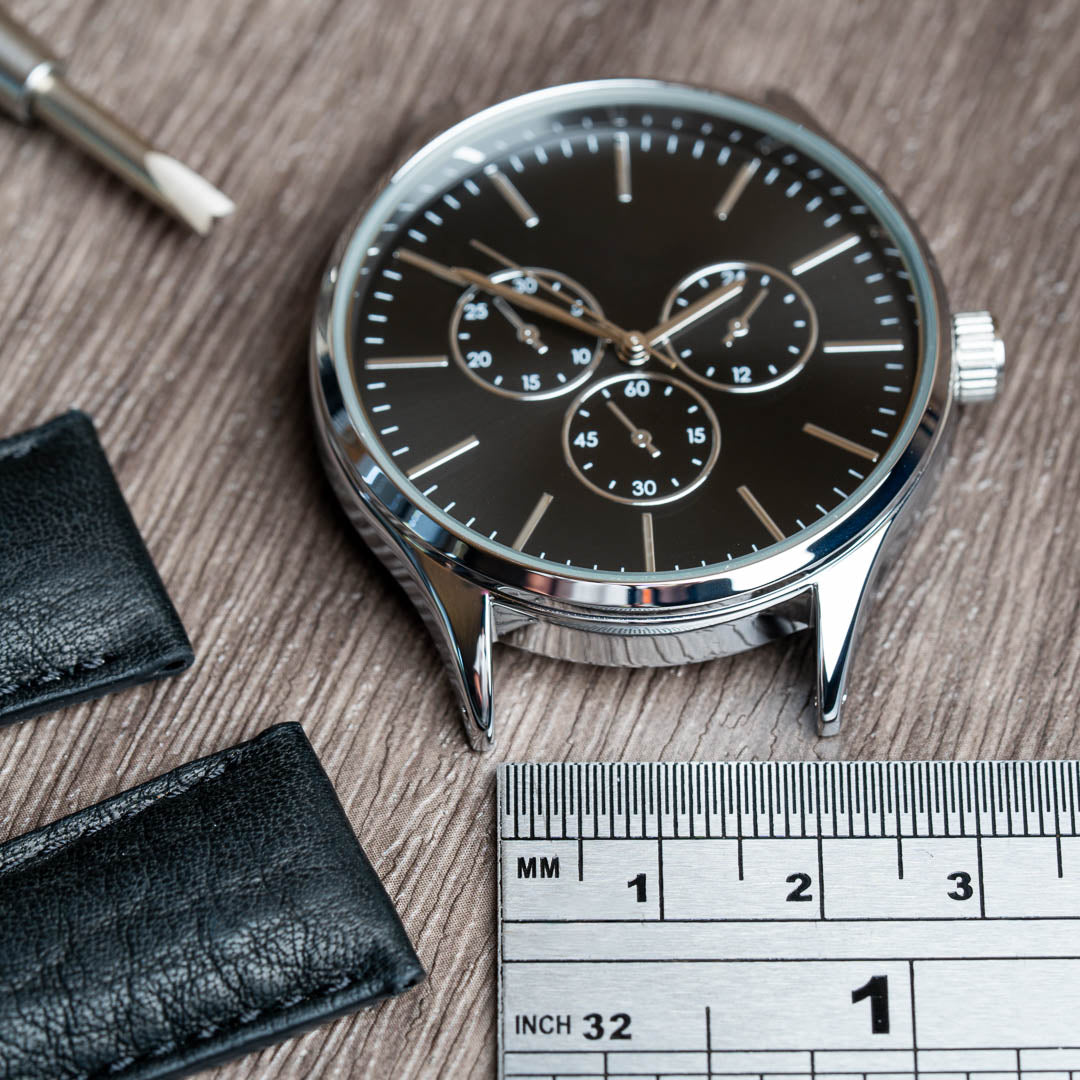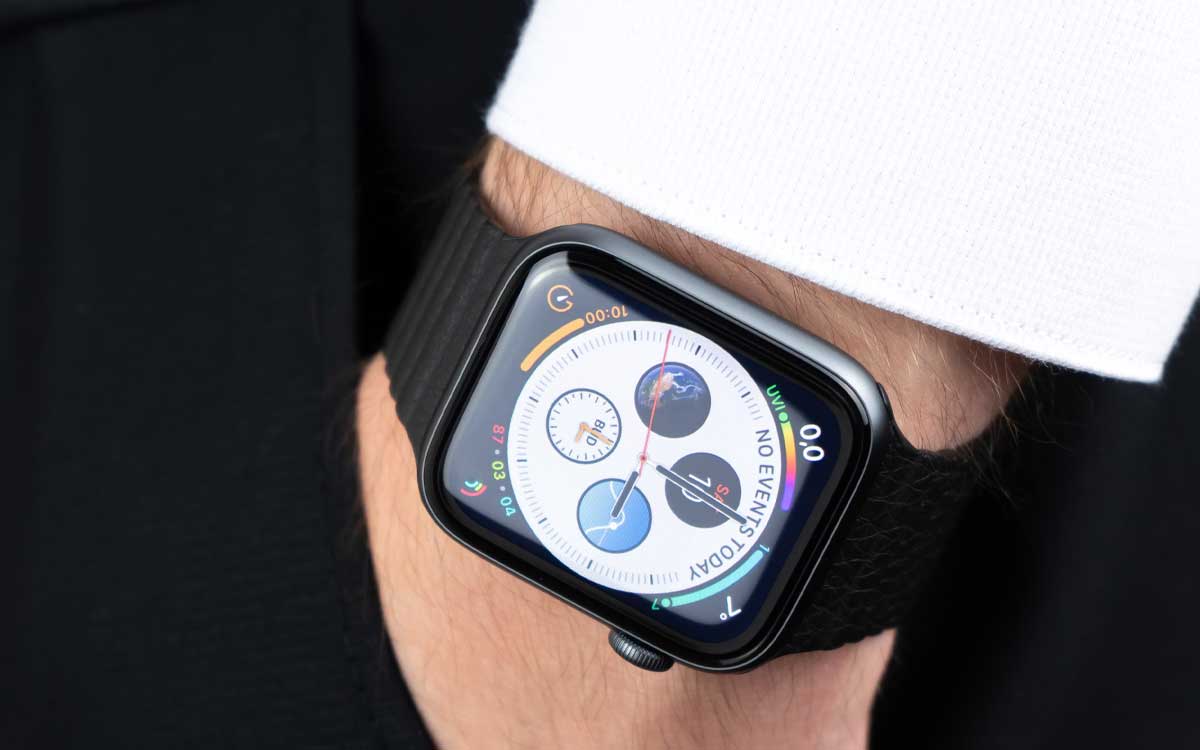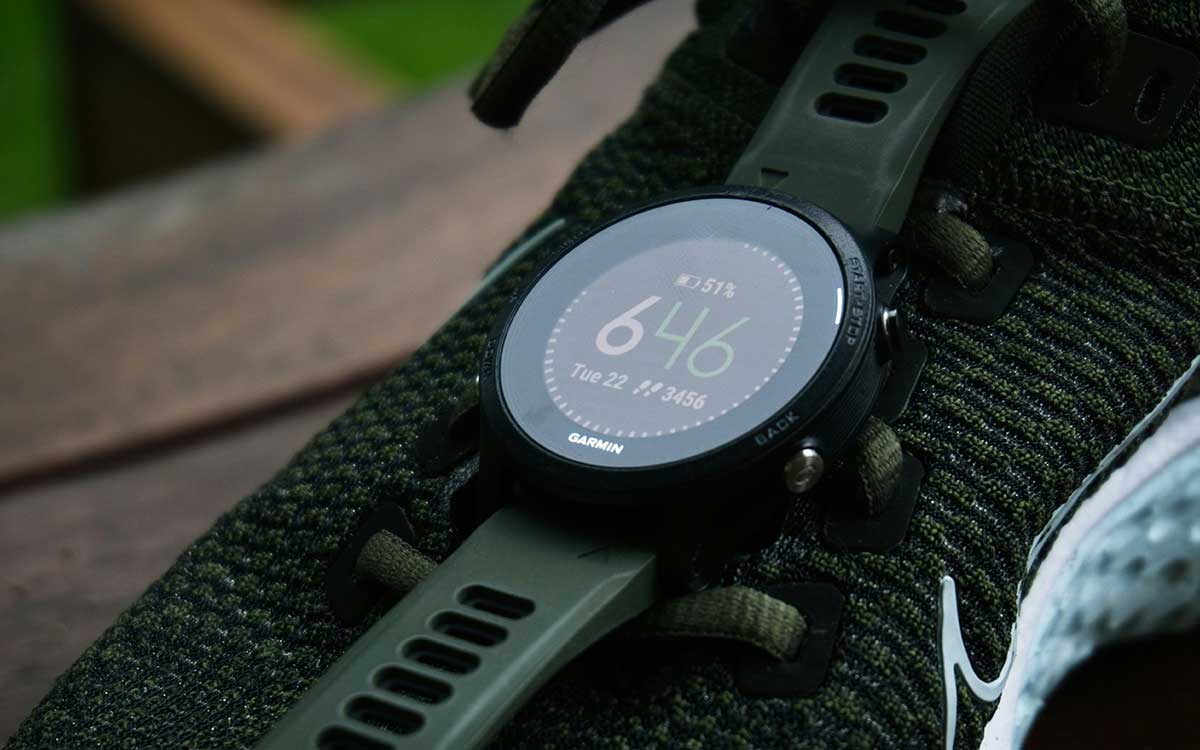Did you know that you can change your Apple Watch strap, at any time, in just seconds? So, what types of straps are good for your watch? How can you choose a good band? We’re here to help.
Here in the UK, more than a quarter of people in their 30s wear an Apple Watch! A surprisingly large percentage of the general population own one, and there’s a reason. Apple Watch devices are part of an exclusive group of timepieces that really do it all. From something as basic as providing the correct time, to helping you communicate with friends and family and even monitoring your health, the Apple Watch is an incredible technological feat. But what many people forget is that there’s even more to it.
Beyond its role as a timekeeper and fitness partner, the Apple Watch also acts as a powerful fashion accessory. Despite its compact size, it has what it takes to make or break an outfit; to completely transform a look, complement your style, and ultimately give you confidence in your appearance.
How does it do all that? Well, some of it is down to the Apple Watch strap.
What is an Apple Watch strap?
An Apple Watch strap – also known as an Apple Watch band – is, of course, the part of the watch that goes around your wrist to keep the device secure on your arm. It’s much the same as any other watch strap, but with one significant difference: Apple Watch straps have been specifically designed with the Apple Watch device in mind. This means that they’re not only a good fit for the lugs, but also that the straps meet the unique requirements of people who have chosen a leading Apple accessory.
Reasons to swap out your Apple Watch strap
Wondering why you may need to change your Apple Watch strap? It’s a good question. And really, there’s no single answer. Everyone has their own individual reason for swapping and changing their Apple bands. Here are some of the most common reasons for getting a new strap. Perhaps you want to:
- Replace an old strap that has become worn or damaged
- Use your watch for new activities, such as swimming
- Match your strap to a specific outfit or occasion
- Have a little fun trying out new styles
- Expand your collection of accessories
Whatever the reason, this guide will help you select the best new Apple Watch band for your needs.
How to choose an Apple Watch strap
If you’ve done a bit of research, you’ve probably realised that there’s an almost never-ending catalogue of Apple Watch straps out there. Feeling overwhelmed trying to choose one? Don’t panic! We’re here with a simple, straightforward, jargon-free guide to help you make a great decision.
The easiest way to choose the right Apple Watch strap for you and your needs is to consider the 6 crucial elements: materials, usage, maintenance, fastenings, size, and appearance. This can help you better understand what you’re looking for in an Apple Watch band, and find the perfect match.
Here’s a closer look at these 6 elements:
1. Material
As is the case with other types of watch strap, you can buy Apple Watch straps in all sorts of different materials and fabrics. There are 3 materials that tend to be most popular for the Apple Watch:
Leather & vegan leather straps
Leather is a classic option for watch straps and can work brilliantly alongside an Apple Watch case, creating a timeless, elegant look. Most leather is made from animal skin – typically calf skin but also alligator, crocodile, lizard, and more – although vegan-friendly alternatives are available. Our leather watch strap guide is a good place to learn more about the different types of leather and finishes.
Nylon straps
Nylon is a synthetic material that’s lightweight, versatile, and impressively durable. While it’s essentially a plastic, it feels more like a soft fabric and is very breathable and comfortable to wear. Nylon watch straps come in all sorts of colours and woven designs – some of them quite intricate. This means there’s a wide variety of looks that these bands can create with the help of your Apple Watch.
Silicone straps
Silicone is a material that falls somewhere between a plastic and a synthetic rubber. It’s stretchy and flexible, making it really comfortable to wear. That’s why it’s become such a popular choice for watch straps, as it moves with your wrist. The rubber appearance of silicone gives these watch straps quite a modern, seamless, and sporty look, contrasting with the more traditional style of leather bands.
2. Usage
Where are you planning to wear your new Apple Watch strap? While this may seem like a strange question, understanding how and where you’re going to use it can help you choose the right type of band. Different activities are often best suited to different types of styles and materials.
For example, if you wear your Apple Watch to track your activity at the gym (where you may get a little sweaty) or while swimming (where you’ll be getting wet), then you’ll need to make sure your strap is designed for these conditions. Some materials – like leather – can become damaged when exposed to damp, while others – like silicone – come with built-in water-resistant properties.
On the other hand, imagine you’re going to be wearing your Apple Watch to business meetings. Do you want a brightly coloured rubber band peeking out from under your formal work clothes, or something a little more professional-looking, like a traditional leather strap with classic metal buckle?
There are similar considerations for practically everything else. Do you regularly head up hiking into the hills? Look for something lightweight but durable. Want something for formal occasions like weddings or dinner parties? That’s going to impact your decision, too.
3. Maintenance
Every watch strap requires a little care and attention to keep it looking its best, and Apple Watch straps are certainly no different. However, different types of materials have different needs.
Leather tends to be the most high-maintenance option simply because it’s a natural material. Just like our own skin, animal skin can dry out, requiring a special leather conditioner to keep it moisturised. It’s also not particularly water-resistant, so leather cleaners are advised rather than just soap and water. But if you have the time to invest in good leather care, the process is actually quite simple.
If you’re always on the go and you know you’re not likely to have the time to spend keeping your watch strap in good nick, consider something that’s much quicker and easier to maintain. Nylon can be kept clean with a damp cloth, while silicone’s probably the easiest out of all of them. As a rubber-like material, you can detach it from your watch case and give it a proper wash as needed.
4. Fastenings
What type of fastening is best for your new Apple Watch strap? This is something that many people overlook when choosing a new band, but it can have a big impact on comfort, convenience, and overall appearance. Apple Watch bands typically come with one of 4 common strap fastenings:
Loop fastening
With either a magnetic or velcro closure, these straps allow you to create the perfect, tailored fit, as you’re not limited to attaching the straps only into a set of pre-made holes.
G-Hook fastening
These can be more fiddly to attach, but the benefit is that it’s very difficult for the strap to come apart. These fastenings are ideal if you’re out hiking or playing sports/activities.
Pin-and-tuck fastening
This involves pushing a small pin on one side of the strap through a pre-made hole in the other side. It’s a very quick and easy way to create a secure and snug fit.
Buckle fastening
This is the traditional watch strap fastening that you may have had in the past. It can be fiddlier than pin-and-tuck options, but does provide a very stylish and classic finish.
5. Size
One of the most important considerations when choosing any new watch strap is, of course, size. However, when it comes to Apple Watch straps, you’re lucky enough to have 2 big advantages.
The first advantage is that you won’t need to learn how to measure a watch strap. To be honest, measuring is actually a very simple process, and it doesn’t take long. But when you’re buying an Apple Watch strap, you can easily tell what size you need just by looking at your Apple Watch case. The size of the case is printed right there on the back of the case in millimetres (mm). So your watch will show a number – either 38, 40, 41, 42, 44, 45, or 49 – which is the size of the strap you need.

The second advantage is that there is a bit of flexibility in Apple Watch strap sizing. With other watches, you’ll need a specific size to fit between the lugs. With the Apple Watch, a unique attachment system means that some cases and strap sizes are compatible with each other:
- 38mm, 40mm, and 41mm cases can use the same bands
- 42mm, 44mm, and 45mm cases can use the same bands
- 44mm, 45mm, and 49mm cases can use the same bands
This can give you a little more flexibility in finding the right fit.
6. Appearance
Last but not least, appearance. This is hugely important because, at the end of the day, you want to select an Apple Watch strap that suits your style, shows off your personality, and makes you happy.
Well, the good news is that Apple Watch bands come in all sorts of shapes, colours, designs and textures. You’ll find solid colours and mixed-colour combos. Pastels, vibrant hues and rainbows. Modern and sporty, as well as classic and traditional. Stand-out aesthetics and subtle looks. We’re confident you can find an Apple Watch strap that’s just what you need.
Apple Watch strap FAQs
Here are some of the top questions we get asked about Apple Watch straps:
Is it easy to change an Apple Watch strap?
With standard watches, you’ll typically need to use a small tool to compress tiny spring bars in order to release the old strap and replace it with a new one. It’s not difficult, but it can be fiddly. But learning how to change your Apple Watch strap is a piece of cake. The Apple Watch uses a unique mechanism that you can operate with zero tools, helping you change your strap in just seconds!
Are Apple Watch straps expensive?
They can be. It all depends on the type of strap you’re buying, and where you’re buying it from. Official Apple-branded straps sold by Apple themselves can be costly, and this deters many people from customising their timepiece. However, Apple-compatible straps – those not made by Apple, but designed and developed to fit Apple Watch devices – are usually more budget-friendly solutions.
How tight should a strap be?
When a strap is too tight, you may struggle to move your wrist. Your skin can also become sweaty if there's not enough airflow, increasing the risk of irritation. However, with the Apple Watch especially, you need a tight enough fit that the sensors have good contact for health tracking. As a general rule, you should be able to get your little finger underneath the strap, but not move it around easily.
How long will an Apple Watch strap last?
This really depends on a number of factors, such as the material you choose, how often you wear it, where you wear it, and how well you maintain it. With proper care, a high-quality Apple Watch band should last for years. Be sure to keep up with little day-to-day maintenance activities, such as removing any dust, dirt, and grime from the strap.








Leave a comment
All comments are moderated before being published.
This site is protected by hCaptcha and the hCaptcha Privacy Policy and Terms of Service apply.